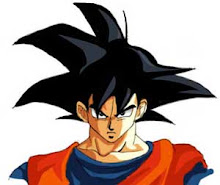I've always been interested in finding out more about patellofemoral pain and just what exactly is the root cause of it. Is there just one? Can it be a combination of things? A lot of therapists/trainers are crazy about the VMO idea and a lot aren't so crazy. I had a patient whilst on placement who was complaining of patellofemoral symptoms. My educator encouraged me to focus on glute medius strengthening rather than VMO exercises to solve the problem. It's a common complaint among the general population and in athletes as they squirm and try to point to behind their knee cap when you ask them where the pain is. Since then I've done some reading around the area and I'm planning to go pretty deep into the research in the coming months to really try and "cut through the bullsh*t" ... so to speak. Take a lot at these snippets I found:
"The most important factor necessary to ensure normal patellofemoral joint function is contraction of the vastus medialis obliquus muscle."
"Dynamically, the most important cause of reduced lateral patellar stabilisation is vastus medialis obliquus insufficiency."
"Medial rotation of the femur is often associated with a tight ITB and poor functioning of the posterior gluteus medius muscle. This gives rise to instability of the pelvis, causing an increase in dynamic Q angle, and increases the potential for patellofemoral pain."
 The Q angle is the angle between the pull of the quads (usually in line with the femur and the pull of the patellar tendon (usually in line with the long axis of the tibia). I've drawn an amazing diagram on paint for your amusement. When flexing and extending the knee the tension created by the 'tug of war' between these two creates a compressive force that keeps the patellar nicely in the patella groove, stopping it from flying about anywhere it's not supposed to be. So what might happen if we get someone who as an increased Q angle? ... Insert comments below!
The Q angle is the angle between the pull of the quads (usually in line with the femur and the pull of the patellar tendon (usually in line with the long axis of the tibia). I've drawn an amazing diagram on paint for your amusement. When flexing and extending the knee the tension created by the 'tug of war' between these two creates a compressive force that keeps the patellar nicely in the patella groove, stopping it from flying about anywhere it's not supposed to be. So what might happen if we get someone who as an increased Q angle? ... Insert comments below! I'll be coming back to this so watch this space :)
Jay
